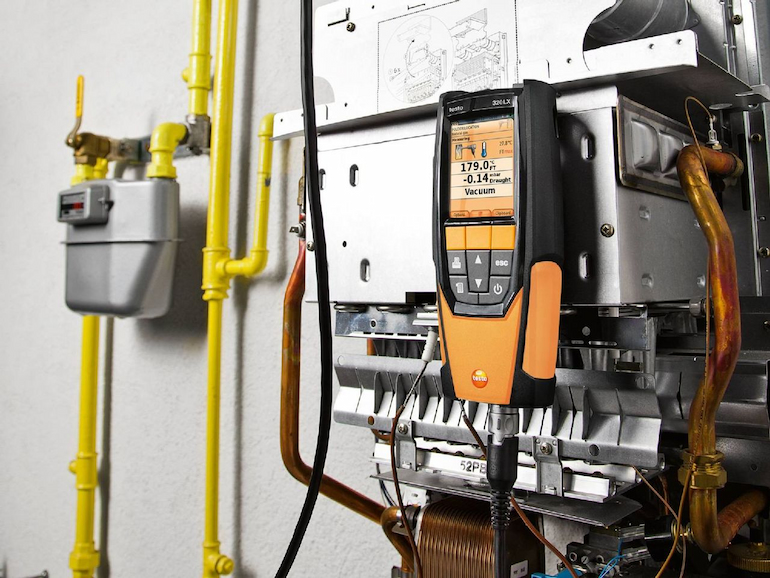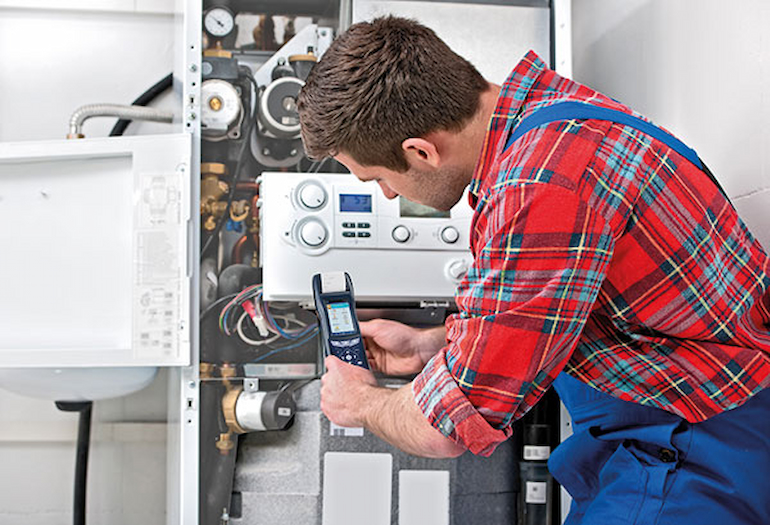Combustion gas, or flue gas analysis is one of the most important processes currently in use to track and manage emissions. Unlike ambient air sampling, flue gas analysis focuses on collecting data directly from emission sources like boilers and furnaces to identify which combustion byproducts are being produced, the rate that they’re being produced at, and the kind of impact they may be having.
More specifically, however, is that air quality and flue gas analysis isn’t limited to industrial users and fossil fuels. It’s the kind of analysis that even homeowners who use bio fuels can benefit from to make their combustion processes more effective. It takes advanced detection and measuring instruments to yield the broadest range of usable data from flue gas analysis though, and no one understands how important the reliability of that data is better than Seitron.
Crucial Combustion Analysis with Seitron

Although Seitron has been at the forefront of solar thermo-regulation technology since 1981, it’s their commitment to fume detection and portable gas analysis instrumentation that has made the biggest impact on how combustion processes are assessed.
They understand that high performance gas monitoring doesn’t have to be complex to be effective. Their robust CHEMIST combustion analyzer series offers a complete lineup of measuring instruments in lightweight, easy to use configurations that are ideal for any combustible application where there’s a concern about emissions.
With optional combinations on select models boasting up to 32 different emission fuel parameters and the ability to store as many as 2,000 full analyses, handheld Seitron combustion analyzers can be used to take flue and exhaust gas readings from a range of sources, including:
- Boilers and furnaces;
- Heating and hot water systems;
- Power generation units;
- Industrial burners; and,
- Petrol and diesel engines.
For plant operators, heating systems installers, and auto mechanics alike, the information obtained with a combustion gas analyzer amounts to more than just a calculation of emissions, though. The ability to measure emissions in real-time allows them to determine how well a combustion process has been optimized; and if it hasn’t been, whether it’s due to poor combustion or a technical issue that requires immediate attention.
The reality is that any loss of thermal efficiency point during the combustion process can rapidly become problematic, and a high-quality flue analyzer is a crucial instrument for identifying where problems could occur.
Intelligent Sensors That You Can Count On

Seitron combustion analyzers are able to house up to 6 bore-fitted, flex-type sensors that can be installed, changed, or replaced in an instant. These pre-calibrated sensors are exclusive to their high-quality portable combustion analyzer design, and are capable of calculating simultaneous measurement parameters for a host of performance values:
- Electrochemical sensors. These sensors use a chemical reaction to measure specific gas concentrations as they’re passed through an electrolyte.
- Pellistor sensors. These sensors utilize encased catalytic beads to detect combustion flue gas that may be either combustible or explosive.
- NDIR (non-dispersive infrared) sensors. These spectroscopic-style sensors measure the amount of light that is absorbed in relation to a specific gas concentration.
- TcK sensors. Type K thermocouple temperature sensors are used to measure incoming combustion air.
- Piezoelectric sensors. These sensors measure pressure at given temperatures and covert that measurement into an electric charge.
The pneumatic circuitry backing up Seitron’s intelligent plug and play sensor design allows for rapid analysis of trace gases after the analyzer’s been dehumidified and purified for any residual combustion products. In short, it’s a sensor system that makes for a combustible flue gas analyzer that’s capable of delivering only the most precise results every time.
Analyzers Built for Full Featured Monitoring
In addition to ambient oxygen and hydrogen (O2 and H2) readings, a Seitron handheld gas analyzer can provide measurements on up to 12 different flue gases directly at the source, including:
- CO, CO2, and CxHy (unburned and concentrated hydrocarbons);
- H2S (hydrogen sulfide);
- NO, NO2, and NOx (nitric oxides and fixed nitrogen compounds);
- NH3 (ammonia); and,
- SO2 (sulfur dioxide).
And with its unmatched flexibility, a Seitron portable flue gas analyzer can also be used to measure attributes such as:
- Chimney or flue draft, and stack heat loss;
- Gas pressure in the flue piping and burning chamber; and,
- Gas pipe tightness and spillage.
Seitron even offers a variety of external emission gas analyzer attachments that allow their analyzers to perform a range of supplemental analysis tasks, including:
- Pitot tubes for measure air speed temperatures leaving the chimney or flue;
- Outdoor air temperature probes for measuring flue temperatures up to 400°C; and,
- Auxiliary probes for measuring ionization current.
Make no mistake: every Seitron CHEMIST portable exhaust gas analyzer is a scalable combustion monitoring instrument that’s as fully featured to manage thermal efficiency as it is for isolating thermal inefficiency. And not surprisingly, Seitron doesn’t sacrifice any of the CHEMIST’S powerful functionality to achieve its world-class data management.
Excellent Data Management with the CHEMIST

One of the first things that anyone who buys a Seitron combustion analyzer for sale is likely to notice is that its wealth of technical features goes beyond gas analysis.
Rechargeable lithium batteries give each handheld exhaust gas analyzer 8 – 12 hours of non-stop, autonomous operation. That’s valuable, uninterrupted collection time that can be used to obtain average emissions data that the CHEMIST can:
- Retain in its internal memory log;
- Line print or create QR codes for; or,
- Transfer via USB or Bluetooth to Seitron’s Smart CHEMIST app.
Suffice it to say, with the full complement of tools and capabilities built into every Seitron exhaust gas analyzer, users can have better access, visibility, and oversight of their combustion processes than they’ve ever had.
The Final Word
At the end of the day, tracking and managing the output from combustion processes isn’t difficult. In fact, it’s a legal requirement in many cases, so it’s incumbent on anyone who’s responsible for these processes to have the most comprehensive and reliable instrumentation available to ensure that it’s done correctly.
Seitron’s CHEMIST combustion analyzer series is designed to place all the necessary data that conducive with performing top notch combustion gas analysis at your fingertips. The cost for not staying on top of your processes can be significant if they’re left unmonitored, but Seitron has everything you need to keep it under control.

